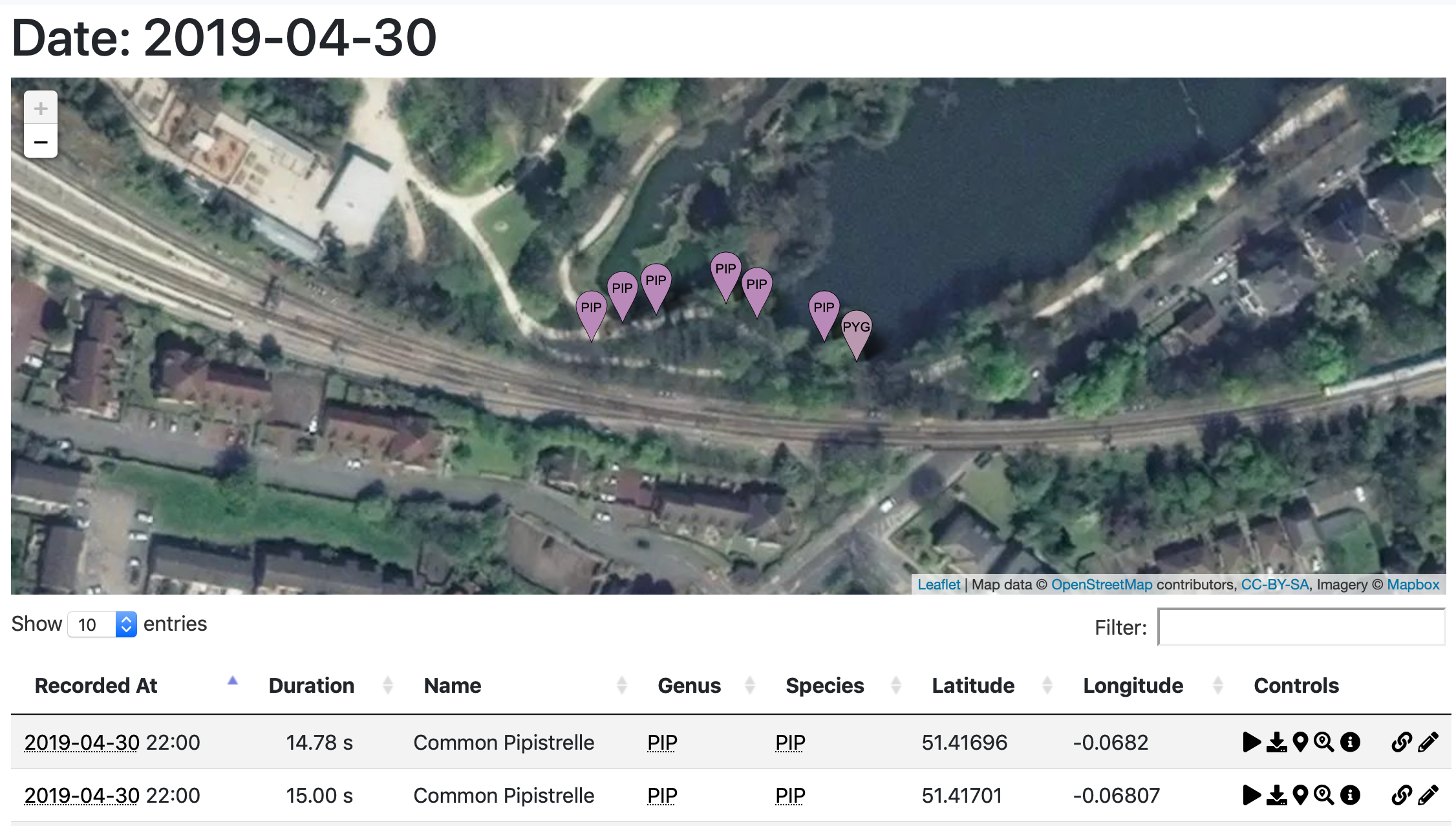About Batbox
Batbox is an tool for displaying bat recordings tagged with Guano metadata, such as those recorded by devices from Wildlife Acoustics.
Batbox was created and is developed by Richard George, aka Parsingphase.
Using this site
Search View

Select the time range and/or species you're interested in. Scroll and pan the map to limit the search area. You'll get instant feedback in the map view as to where results are found.
To view the search results in detail on the map view, hit the search button.
Map View

The Map view displays selected recordings, whether picked by day or species or produced from a search query.
Each recording includes a number of controls, which can include:
| Play this recording | |
| Download this recording | |
| Highlight this recording on the map | |
| Zoom to this recording on the map | |
| Show a visualisation of the spectrum of the sound file | |
| Show species info at MammalDiversity.org | |
| Permalink: display just this recording | |
| Admin only: edit this recording |
You can also search within the selected recordings via the Filter input.
Information sources
Species names
The embedded species data in most recordings consists of a 4 or 6 character string, such as MYSO or PIPPYG. This appears to be a truncated form of the latin name of the genus and species of the identified bats. As these abbreviations aren't very meaningful to the casual user, the site attempts to automatically expand them and provide a common name where possible.
To do so, it uses data from the American Society of Mammalogists' Mammal Diversity Database, which is free for download. Please note however that the full names provided are achieved by a simple automated match of the abbreviations, so may not be foolproof. If you see a species in entirely the wrong place on the map (eg a tropical bat in the UK), please let the site operator or developer (not the ASM) know! Equally, if you see recordings with no expanded latin names (not all species even have 'common names' in English), please let (me) the developer know and I'll try to improve the matching.
Further credits
The extraction of embedded data from recordings (locations, species and times) depends heavily on David Riggs' guano-py library.
This site is indebted to, but not affiliated with, David Riggs, Myotisoft and the American Society of Mammalogists
Technical notes
Safari on the iPhone or iPad (iOS) cannot play the high sample rate (256k - 384k) audio files natively produced by some bat recorders such as the Echo Meter Touch. If your browser fails to play a high-rate file, it will try to play a subsampled version, if available.
Note that only the high-rate version can be downloaded and saved, so you may not be able to play downloaded files on mobile devices.
Spectrum visualisations (spectrograms) are optimised for visual effect rather than technical precision and so are pre-filtered to reduce visual clutter.
Using this software with your own data
Batbox is open source software, which you can download for free from GitHub and run on your own server or desktop, with your own recordings.
Limited installation instructions are available at the GitHub link; if you have problems, or to report any faults, please open a new issue.
Batbox runs on Python 3.7+ under Django 2.2